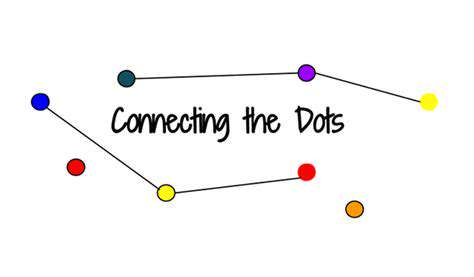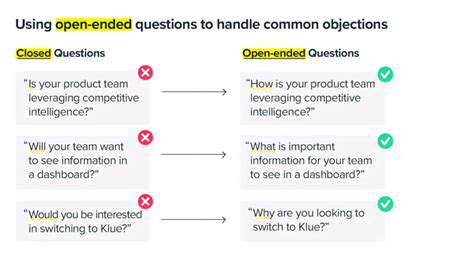Guide to Cross Cultural Communication in the Workplace
The Importance of Cultural Awareness in the Modern Workplace
Understanding Cultural Differences
In today's globalized workplace, fostering cultural awareness is paramount. A deep understanding of diverse cultural backgrounds is crucial for effective communication, collaboration, and conflict resolution. Recognizing that communication styles, work ethics, and even nonverbal cues can vary significantly between cultures is vital. Ignoring these differences can lead to misunderstandings, misinterpretations, and ultimately, decreased productivity and team cohesion.
Different cultures have varying approaches to decision-making, leadership styles, and work-life balance. A manager who understands these nuances can create a more inclusive and productive environment where everyone feels valued and respected. This understanding goes beyond simply recognizing holidays or traditions; it involves acknowledging the underlying values and beliefs that shape people's behaviors and expectations in the workplace.
Effective Communication Across Cultures
Clear and concise communication is essential, but it's not always enough in a multicultural environment. Effective communication involves adapting your communication style to the specific cultural context. This might mean adjusting your tone, language, and nonverbal cues to ensure your message is understood and appreciated.
Active listening is also crucial. Truly understanding the perspective of others requires being attentive and empathetic. Taking the time to listen carefully to what people are saying, both verbally and nonverbally, fosters stronger relationships and promotes mutual respect.
Building Trust and Respect
Building trust and respect within a diverse team is essential for fostering a positive and productive work environment. Demonstrating respect for different cultural backgrounds involves recognizing and valuing individual perspectives and experiences. This requires an open-mindedness to learn about and appreciate different ways of thinking, behaving, and communicating.
Creating opportunities for team members to interact and learn from one another is also a key component. Team-building activities, cultural exchange programs, and simply encouraging open dialogue can greatly contribute to building trust and respect among colleagues from various backgrounds.
Managing Conflict in a Multicultural Setting
Conflicts are inevitable in any workplace, but they can take on unique complexities in a multicultural environment. Understanding how different cultures handle conflict is critical for effective management. Some cultures prioritize direct confrontation, while others favor indirect approaches or mediation.
Effective conflict resolution strategies often involve acknowledging and addressing the underlying cultural differences that may contribute to the conflict. This requires sensitivity, patience, and a willingness to understand the perspectives of all involved parties.
Adapting Leadership Styles
Leadership styles vary considerably across cultures. A leadership approach that works effectively in one culture might not be as successful in another. Leaders need to be adaptable and flexible, adjusting their leadership style to suit the specific cultural context.
Being mindful of different communication styles, decision-making processes, and expectations surrounding authority is essential for successful leadership in a multicultural team. This requires a commitment to learning and adapting to ensure that leadership is inclusive and effective for all members of the team.
Fostering Inclusion and Belonging
Creating an inclusive workplace where everyone feels valued and respected is crucial for maximizing productivity and fostering innovation. This involves actively promoting understanding and appreciation of different cultures.
Implementing policies and practices that support diversity and inclusion can create a sense of belonging for all employees. This might include providing cultural sensitivity training, offering translation services, or creating employee resource groups that represent different cultural backgrounds.
The Benefits of Cultural Awareness
Investing in cultural awareness training and fostering a culture of respect and understanding yields numerous benefits. Improved communication, stronger relationships, and more innovative solutions are just a few examples. A culturally aware workplace is a more engaged workplace, leading to higher employee satisfaction and retention rates.
Companies that embrace cultural diversity are often better positioned to tap into new markets and build stronger global relationships. Ultimately, a commitment to cultural awareness translates into a more profitable and successful organization in today's interconnected world.
Recognizing and Respecting Cultural Differences

Understanding Cultural Nuances
Cultural awareness goes beyond simply acknowledging the existence of different cultures; it involves actively seeking to understand the nuances and complexities of each. This includes recognizing that cultural norms, values, and beliefs shape how individuals perceive the world and interact with others. Developing this understanding requires a willingness to step outside of one's own cultural comfort zone and engage with different perspectives without judgment.
By actively listening and learning from those who hold different cultural backgrounds, we can gain a deeper appreciation for their unique experiences. This process of understanding involves acknowledging the importance of cultural context when interpreting actions, behaviors, and communication styles.
Importance of Respectful Communication
Respectful communication is paramount in bridging cultural divides. This involves actively listening to others, demonstrating empathy, and tailoring communication styles to the specific audience. It's crucial to avoid making assumptions or generalizations about others based on their cultural background.
Clear and concise language, along with avoiding slang or jargon that might not be universally understood, are essential components of respectful communication. Furthermore, being mindful of nonverbal cues, such as body language and tone of voice, is vital for effective cross-cultural interactions. Understanding the significance of these nonverbal cues can often prevent misunderstandings and foster stronger relationships.
Celebrating Cultural Diversity
Embracing cultural diversity means acknowledging and appreciating the richness and variety of human experiences. This includes recognizing that different cultures bring unique perspectives, traditions, and artistic expressions to the world. By celebrating these differences, we create an environment where everyone feels valued and respected.
Recognizing and appreciating the contributions of various cultural groups is essential for fostering a more inclusive and harmonious society. This celebration of diversity enhances creativity, innovation, and problem-solving by drawing from a wide range of experiences and perspectives. It also promotes a more tolerant and understanding global community.
Overcoming Cultural Barriers
Cultural barriers can arise from misunderstandings, stereotypes, and prejudices. These barriers can hinder effective communication and collaboration. Overcoming these obstacles requires a conscious effort to challenge preconceived notions, actively seek out diverse perspectives, and engage in respectful dialogue.
By cultivating empathy and demonstrating genuine interest in understanding others' cultural backgrounds, we can help to break down these barriers. This process requires ongoing self-reflection and a commitment to continuous learning and personal growth. Open-mindedness and a willingness to learn from our mistakes are vital in this journey of cultural understanding.
Adapting Communication Strategies for Different Cultures
Understanding Cultural Nuances in Communication
Effective cross-cultural communication hinges on recognizing and respecting the diverse communication styles prevalent in various cultures. Different cultures prioritize different aspects of communication, such as directness versus indirectness, nonverbal cues, and the use of silence. Understanding these nuances is crucial for avoiding misunderstandings and fostering positive relationships in a globalized world. For example, some cultures value direct and explicit communication, while others prefer a more indirect and implicit approach. Failing to recognize these differences can lead to misinterpretations and strained interactions, hindering collaboration and creating conflict.
Furthermore, the interpretation of nonverbal cues can vary significantly across cultures. A gesture considered polite in one culture might be offensive in another. For instance, a head nod in some countries signifies agreement, while in others, it might indicate disagreement or simply a sign of attentiveness. Therefore, it's essential to be mindful of the potential for misinterpretations and to actively seek clarification when necessary. This involves being open to learning about different cultural norms and practices, and being willing to adapt one's communication style accordingly.
Tailoring Communication Approaches for Specific Cultural Groups
When interacting with individuals from diverse cultural backgrounds, it's essential to tailor communication approaches to specific cultural groups. This includes considering factors such as the level of formality, the preferred communication channels, and the importance placed on building rapport before engaging in business discussions. For example, some cultures prioritize establishing personal relationships before discussing business matters, while others prefer a more direct and structured approach. Understanding these differences allows communicators to adapt their style and approach to resonate effectively with their audience and foster trust.
Moreover, the preferred communication channels can vary across cultures. Some cultures might rely heavily on face-to-face interactions, while others might favor written communication or digital platforms. Recognizing these preferences and adapting communication strategies accordingly is key to ensuring effective message delivery. For instance, a presentation delivered in a formal setting might require a different approach than an informal meeting or online interaction. By being sensitive to these nuances, communicators can improve the clarity and impact of their message.
Understanding cultural context is vital for effective communication. This means being aware of the historical, social, and political factors that shape a culture's values and beliefs. For example, a culture with a history of hierarchical structures might expect a different communication style than one that emphasizes equality and collaboration. By considering these contextual factors, communicators can develop more nuanced and empathetic communication strategies. This approach will facilitate better understanding and collaboration in a multicultural environment.
Building Bridges Through Active Listening and Empathy

Enhancing Communication
Effective communication is paramount in building strong relationships, whether personal or professional. Active listening is key, demonstrating a genuine interest in understanding the other person's perspective. This involves not just hearing the words but also paying attention to their body language and tone of voice to grasp the full message. Active listening creates a safe space for open dialogue and fosters trust.
Furthermore, clear and concise articulation of one's own thoughts and feelings is equally important. Using I statements can help avoid misunderstandings and ensure that the message is conveyed accurately. This clarity fosters mutual understanding and prevents assumptions from clouding the conversation.
Fostering Empathy
Understanding and sharing the feelings of others is crucial for building bridges. Empathy involves stepping into another person's shoes and trying to see the world from their point of view. This involves acknowledging that people have different experiences, values, and perspectives. Putting yourself in another person's position allows you to appreciate their emotions and motivations, making it easier to connect with them on a deeper level.
Empathy is not about agreement; it's about acknowledging and validating the other person's experience, even if you don't share it. This ability to connect with others on an emotional level is essential for building strong relationships and fostering cooperation.
Promoting Collaboration
Collaboration is a cornerstone of successful bridge-building. It involves working together towards a shared goal, recognizing the unique contributions of each individual. Effective collaboration often requires compromise and a willingness to adapt to the needs of others. This willingness to work together toward a common objective builds stronger bonds and fosters mutual respect.
Respecting diverse perspectives and approaches is vital in a collaborative environment. Acknowledging the validity of differing opinions and finding common ground is essential in achieving shared success. This open-mindedness not only strengthens relationships but also leads to innovative solutions and improved outcomes.
Cultivating Respect
Mutual respect is the foundation upon which all strong relationships are built. Respect involves valuing the other person's opinions, feelings, and contributions. It means acknowledging their worth and recognizing their right to their own beliefs and experiences.
Treating others with dignity and courtesy, regardless of differences, is crucial in fostering a positive and productive environment. Respectful interactions build trust and create a space where individuals feel comfortable sharing their ideas and perspectives.
Building Trust
Trust is essential for any meaningful connection. It arises from consistency in actions, reliability, and transparency in communication. Honesty and integrity are cornerstones of building trust. When individuals consistently demonstrate trustworthiness, others feel safe and comfortable relying on them.
Trust is a delicate thing, easily broken but slowly and painstakingly rebuilt. Consistent actions that demonstrate reliability and commitment are essential to establish and maintain trust.
Overcoming Conflict
Conflict is inevitable in any relationship, but how it's handled dictates the outcome. Addressing conflict constructively requires active listening, empathy, and a willingness to compromise. Effective communication is crucial in navigating disagreements and finding common ground. Openly discussing concerns and seeking solutions together allows for conflict resolution that strengthens the bond rather than damages it.
Respectful communication and a focus on finding mutually beneficial solutions are crucial to resolving disagreements in a way that promotes understanding and strengthens the relationship.
Read more about Guide to Cross Cultural Communication in the Workplace
Hot Recommendations
- How to Stay Productive While Working Remotely
- Tips for Managing Conflict with Coworkers
- Entrance & Certification Exams (升学考试)
- How to Improve Your Storytelling Skills (Speaking)
- How to Find Profitable Side Hustles
- Tips for Preparing for the TOEFL iBT Home Edition
- Guide to Switching Careers from [Industry A] to [Industry B]
- How to Run an Effective Hybrid Meeting
- Tips for Marketing Your Side Hustle on Instagram











